Microhard Systems 14P400 Pico 900MHz 1W FHSS/400MHz 2W License Band Module User Manual p400manualREV0 40 FCC
Microhard Systems Inc Pico 900MHz 1W FHSS/400MHz 2W License Band Module p400manualREV0 40 FCC
User Manual

Operating Manual
p400
Pico 900MHz 1W FHSS / 400MHz 2W
License Band Module
Revision 0.20, September 16, 2014
www.microhardcorp.com
Microhard S
y
stems Inc.

ii P400 Operating Manual
Warranty
Microhard Systems Inc. warrants that each product will be free of defects in material and workmanship for a period of one (1)
year for its products. The warranty commences on the date the product is shipped by Microhard Systems Inc. Microhard Systems
Inc.’s sole liability and responsibility under this warranty is to repair or replace any product which is returned to it by the Buyer
and which Microhard Systems Inc. determines does not conform to the warranty. Product returned to Microhard Systems Inc. for
warranty service will be shipped to Microhard Systems Inc. at Buyer’s expense and will be returned to Buyer at Microhard
Systems Inc.’s expense. In no event shall Microhard Systems Inc. be responsible under this warranty for any defect which is
caused by negligence, misuse or mistreatment of a product or for any unit which has been altered or modified in any way. The
warranty of replacement shall terminate with the warranty of the product.
Warranty Disclaims
Microhard Systems Inc. makes no warranties of any nature of kind, expressed or implied, with respect to the hardware, software,
and/or products and hereby disclaims any and all such warranties, including but not limited to warranty of non-infringement,
implied warranties of merchantability for a particular purpose, any interruption or loss of the hardware, software, and/or product,
any delay in providing the hardware, software, and/or product or correcting any defect in the hardware, software, and/or product,
or any other warranty. The Purchaser represents and warrants that Microhard Systems Inc. has not made any such warranties to
the Purchaser or its agents MICROHARD SYSTEMS INC. EXPRESS WARRANTY TO BUYER CONSTITUTES
MICROHARD SYSTEMS INC. SOLE LIABILITY AND THE BUYER’S SOLE REMEDIES. EXCEPT AS THUS
PROVIDED, MICROHARD SYSTEMS INC. DISCLAIMS ALL WARRANTIES, EXPRESS OR IMPLIED, INCLUDING
ANY WARRANTY OF MERCHANTABILITY OR FITNESS FOR A PARTICULAR PROMISE.
MICROHARD SYSTEMS INC. PRODUCTS ARE NOT DESIGNED OR INTENDED TO BE USED IN
ANY LIFE SUPPORT RELATED DEVICE OR SYSTEM RELATED FUNCTIONS NOR AS PART OF
ANY OTHER CRITICAL SYSTEM AND ARE GRANTED NO FUNCTIONAL WARRANTY.
Indemnification
The Purchaser shall indemnify Microhard Systems Inc. and its respective directors, officers, employees, successors
and assigns including any subsidiaries, related corporations, or affiliates, shall be released and discharged from any
and all manner of action, causes of action, liability, losses, damages, suits, dues, sums of money, expenses
(including legal fees), general damages, special damages, including without limitation, claims for personal injuries,
death or property damage related to the products sold hereunder, costs and demands of every and any kind and
nature whatsoever at law.
IN NO EVENT WILL MICROHARD SYSTEMS INC. BE LIABLE FOR ANY INDIRECT, SPECIAL,
CONSEQUENTIAL, INCIDENTAL, BUSINESS INTERRUPTION, CATASTROPHIC, PUNITIVE OR OTHER
DAMAGES WHICH MAY BE CLAIMED TO ARISE IN CONNECTION WITH THE HARDWARE,
REGARDLESS OF THE LEGAL THEORY BEHIND SUCH CLAIMS, WHETHER IN TORT, CONTRACT OR
UNDER ANY APPLICABLE STATUTORY OR REGULATORY LAWS, RULES, REGULATIONS,
EXECUTIVE OR ADMINISTRATIVE ORDERS OR DECLARATIONS OR OTHERWISE, EVEN IF
MICROHARD SYSTEMS INC. HAS BEEN ADVISED OR OTHERWISE HAS KNOWLEDGE OF THE
POSSIBILITY OF SUCH DAMAGES AND TAKES NO ACTION TO PREVENT OR MINIMIZE SUCH
DAMAGES. IN THE EVENT THAT REGARDLESS OF THE WARRANTY DISCLAIMERS AND HOLD
HARMLESS PROVISIONS INCLUDED ABOVE MICROHARD SYSTEMS INC. IS SOMEHOW HELD
LIABLE OR RESPONSIBLE FOR ANY DAMAGE OR INJURY, MICROHARD SYSTEMS INC.'S LIABILITY
FOR ANYDAMAGES SHALL NOT EXCEED THE PROFIT REALIZED BY MICROHARD SYSTEMS INC.
ON THE SALE OR PROVISION OF THE HARDWARE TO THE CUSTOMER.
Proprietary Rights
The Buyer hereby acknowledges that Microhard Systems Inc. has a proprietary interest and intellectual property rights in the
Hardware, Software and/or Products. The Purchaser shall not (i) remove any copyright, trade secret, trademark or other evidence
of Microhard Systems Inc.’s ownership or proprietary interest or confidentiality other proprietary notices contained on, or in, the
Hardware, Software or Products, (ii) reproduce or modify any Hardware, Software or Products or make any copies thereof, (iii)
reverse assemble, reverse engineer or decompile any Software or copy thereof in whole or in part, (iv) sell, transfer or otherwise
make available to others the Hardware, Software, or Products or documentation thereof or any copy thereof, except in accordance
with this Agreement.
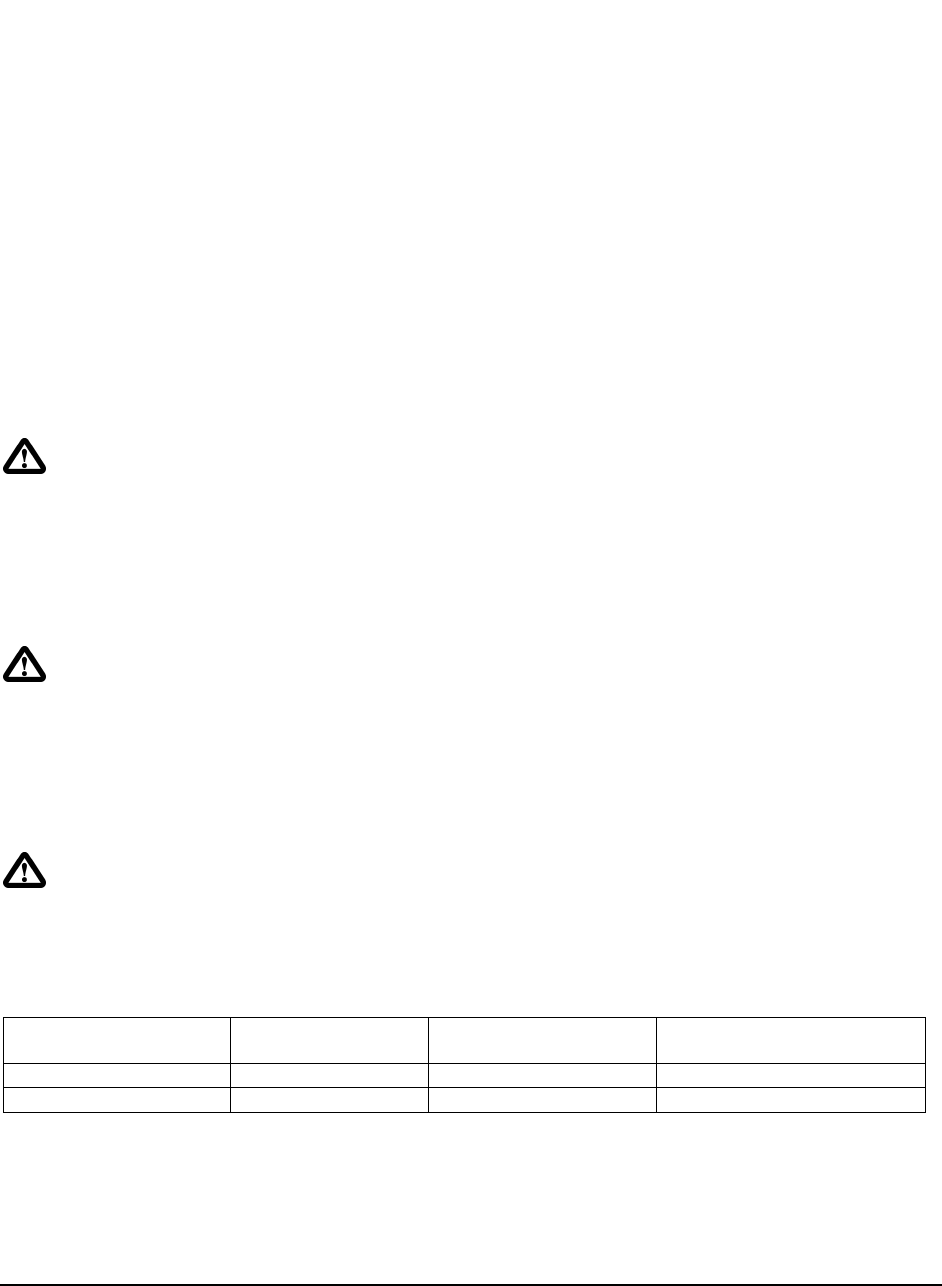
iii
p400 Regulatory Requirements
NOTE: This equipment has been tested and found to comply with the limits for a Class B digital device, pursuant to
part 15 of the FCC Rules. These limits are designed to provide reasonable protection against harmful interference in
a residential installation. This equipment generates, uses and can radiate radio frequency energy and, if not installed
and used in accordance with the instructions, may cause harmful interference to radio communications. However,
there is no guarantee that interference will not occur in a particular installation. If this equipment does cause harmful
interference to radio or television reception, which can be determined by turning the equipment off and on, the user is
encouraged to try to correct the interference by one or more of the following measures:
Reorient or relocate the receiving antenna.
Increase the separation between the equipment and receiver.
Connect the equipment into an outlet on a circuit different from that to which the receiver is connected.
Consult the dealer or an experienced radio/TV technician for help.
This device complies with Industry Canada licence-exempt RSS standard(s). Operation is subject to the following two
conditions: (1) this device may not cause interference, and (2) this device must accept any interference, including
interference that may cause undesired operation of the device.
WARNING: INTEGRATION:
To ensure compliance with all non-transmitter functions the host manufacturer is responsible for ensuring compliance
with the module(s) installed and is fully operational. For example, if a host was previously authorized as an
unintentional radiator under the Declaration of Conformity procedure without a transmitter certified module and a
module is added, the host manufacturer is responsible for ensuring that after the module is installed and operational
the host continues to be compliant with the Part 15B unintentional radiator requirements. Since this may depend on
the details of how the module is integrated with the host. This module is certified for Fixed and Mobile Applications
only, for portable applications you will require a new certification.
WARNING: 900MHz Operation:
To satisfy FCC RF exposure requirements for mobile transmitting devices, a separation distance of 23 cm or more
should be maintained between the antenna of this device and persons during device operation. To ensure
compliance, operations at closer than this distance is not recommended. The antenna used for this transmitter
must not be co-located in conjunction with any other antenna or transmitter. MAXIMUM EIRP FCC Regulations
allow up to 36 dBm equivalent isotropically radiated power (EIRP). Therefore, the sum of the transmitted power
(in dBm), the cabling loss and the antenna gain cannot exceed 36 dBm.
WARNING: 400MHz Operation:
To satisfy FCC RF exposure requirements for mobile transmitting devices, a separation distance is based on the
above them ranging from 24 cm to 77 cm between the antenna of this device and persons during device operation.
To ensure compliance, operations at closer than this distance is not recommended. The antenna used for this
transmitter must not be co-located in conjunction with any other antenna or transmitter.
Antenna Impedance
(ohms) Antenna Gain (dBi) Minimum Separation
Distance (cm)
Minimum Gain 50 0 24
Maximum Gain 50 10 76.7
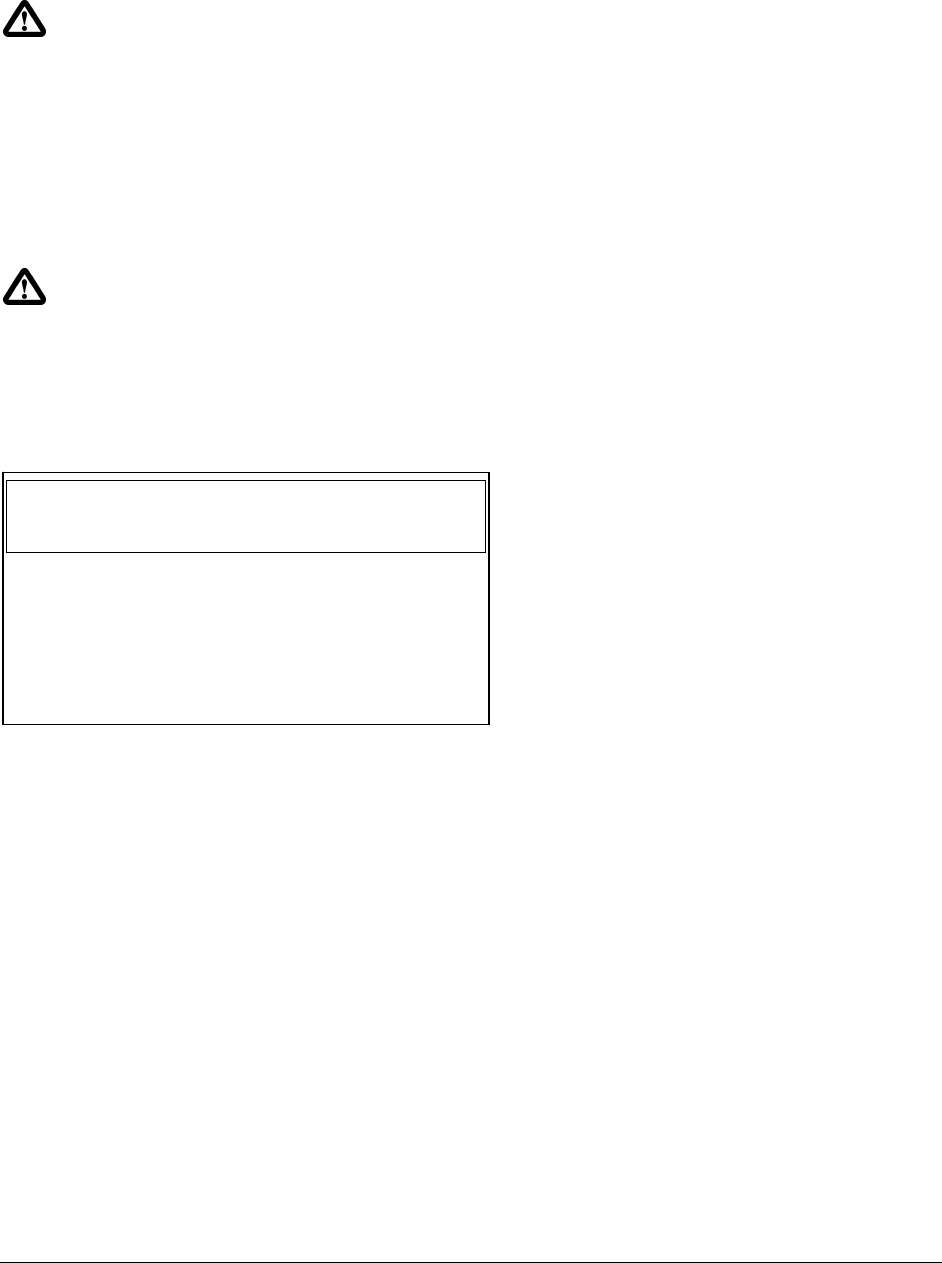
iv P400 Operating Manual
WARNING: ANTENNA:
FCC: Changes or modifications not expressly approved by Microhard Systems Inc. could void the user’s authority to
operate the equipment. This device has been tested with UFL and Reverse Polarity SMA connectors with the
antennas listed in Appendix A When integrated in OEM products, fixed antennas require installation preventing end-
users from replacing them with non-approved antennas. Antennas not listed in the tables must be tested to comply
with FCC Section 15.203 (unique antenna connectors) and Section 15.247 (emissions).
IC: This radio transmitter 3143A-14P400 has been approved by Industry Canada to operate with the antenna types
listed Appendix A with the maximum permissible gain and required antenna impedance for each antenna type
indicated. Antenna types not included in this list, having a gain greater than the maximum gain indicated for that type,
are strictly prohibited for use with this device.
WARNING: EQUIPMENT LABELING:
The FCC and IC numbers depend on the model of the radio module. Do NOT use the Marketing Name of the
product but the Model to distinguish the Certifications Numbers. This device has been modularly approved. The
manufacturer, product name, and FCC and Industry Canada identifiers of this product must appear on the outside
label of the end-user equipment.
SAMPLE LABEL REQUIREMENT:
Contains:
FCC ID: NS914P400 IC : 3143A-14P400
This device complies with Part 15 of the FCC Rules.
Operation is subject to the following two conditions:
(1) this device may not cause harmful interference,
and (2) this device must accept any interference
received including interference that may cause
undesired operation.
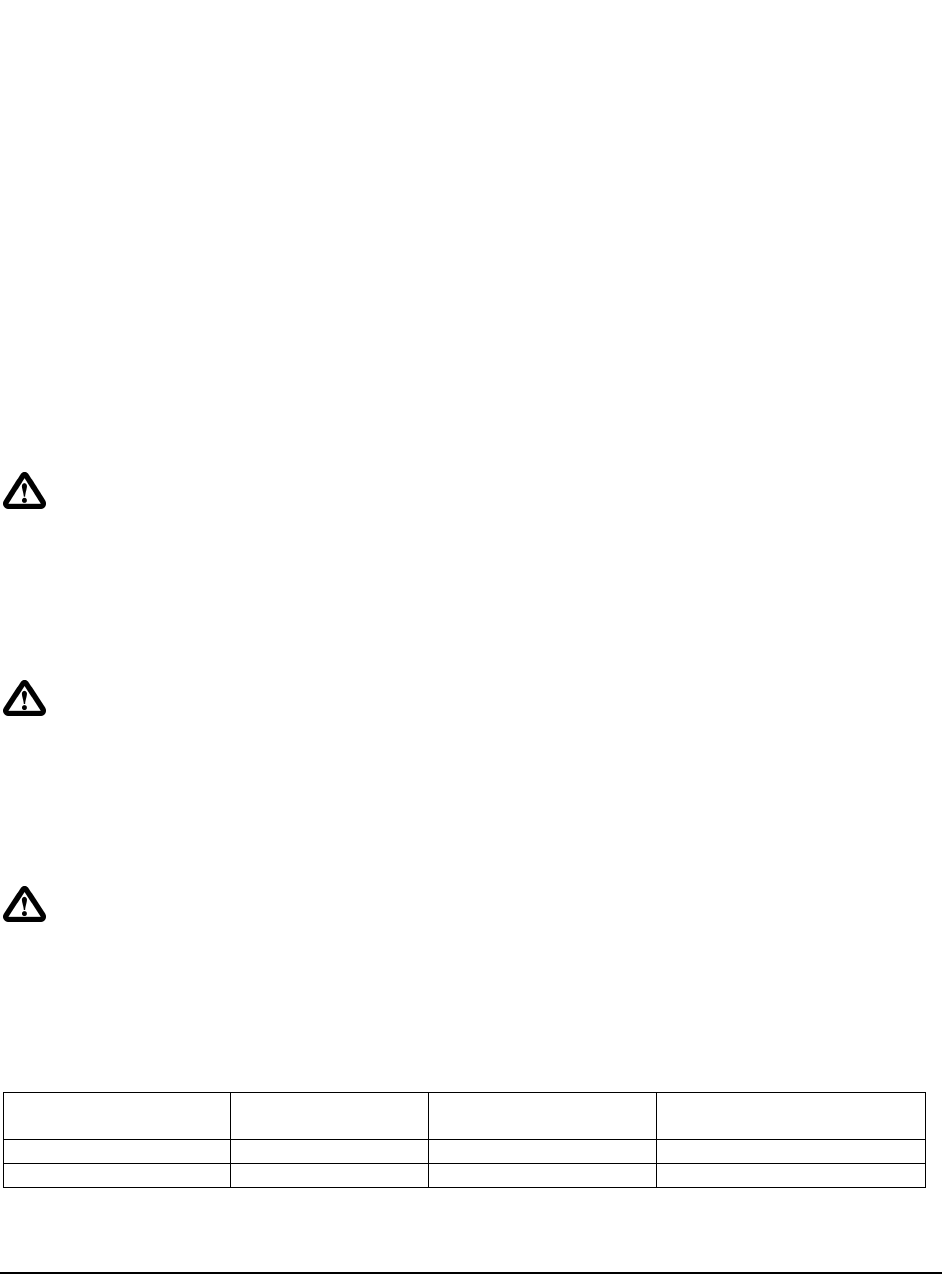
v
p400 Regulatory Requirements
Remarque : Cet équipement a été testé et déclaré conforme aux limites d'un appareil numérique de classe B,
conformément à la partie 15 des règles FCC. Ces limites sont conçues pour fournir une protection raisonnable contre
les interférences nuisibles dans une installation résidentielle. Cet équipement génère, utilise et peut émettre de
l'énergie radiofréquence et, si pas installé et utilisé conformément aux instructions, peut causer des interférences
nuisibles aux communications radio. Cependant, il n'y a aucune garantie que l'interférence ne se produira pas dans
une installation particulière. Si cet équipement provoque des interférences nuisibles à la radio ou la réception de la
télévision, qui peut être déterminée en éteignant et rallumant l'équipement, l'utilisateur est encouragé à essayer de
corriger l'interférence par une ou plusieurs des mesures suivantes :
Réorienter ou déplacer l'antenne réceptrice.
Augmenter la distance séparant l'équipement et le récepteur.
Branchez l'appareil dans une prise sur un circuit différent de celui auquel le récepteur est branché.
Consultez le revendeur ou un technicien radio/TV.
Cet appareil est conforme avec Industrie Canada, exempts de licence RSS ou les normes. Opération est sujette
aux deux conditions suivantes: (1) cet appareil ne peut pas causer de brouillage et (2) cet appareil doit accepter
toute interférence reçue, y compris les interférences pouvant entraîner un fonctionnement indésirable du
dispositif.
WARNING: INTÉGRATION:
Pour assurer le respect de toutes les fonctions non-émetteur du fabricant hôte est responsable de la conformité avec
le module installé (s) et est pleinement opérationnel. Par exemple, si un hôte a déjà été autorisé comme un radiateur
involontaire en vertu de la procédure de déclaration de conformité sans un module émetteur certifié et un module est
ajouté, le fabricant de l'hôte est responsable de s'assurer que, après le module est installé et opérationnel de l'hôte
continue d'être conforme aux exigences de radiateur involontaire partie 15B. Depuis cela peut dépendre sur les
détails de la façon dont le module est intégré avec l'hôte. Ce module est certifié pour des applications fixes et mobiles
uniquement, pour les applications portables que vous aurez besoin d'une nouvelle certification.
WARNING: 900MHz d'exploitation::
Pour satisfaire la FCC en matière d'exposition pour les appareils mobiles de transmission, une distance de
séparation de 23 cm ou plus doit être maintenue entre l'antenne de cet appareil et des personnes pendant le
fonctionnement du dispositif. Pour assurer la conformité, les opérations à distance inférieure à celle n'est pas
recommandée. L'antenne utilisée pour ce transmetteur ne doit pas être co-localisés en conjonction avec une autre
antenne ou émetteur. Règlement FCC MAXIMUM PIRE permettent jusqu'à 36 dBm puissance isotrope rayonnée
équivalente (PIRE). Par conséquent, la somme de la puissance émise (en dBm), la perte de câblage et le gain de
l'antenne ne doit pas dépasser 36 dBm.
WARNING: 400MHz d'exploitation:
Pour satisfaire la FCC en matière d'exposition pour les appareils mobiles de transmission, une distance de
séparation est basée sur le dessus d'eux allant de 24 cm à 77 cm entre l'antenne de cet appareil et des personnes
pendant le fonctionnement du dispositif. Pour assurer la conformité, les opérations à distance inférieure à celle n'est
pas recommandée. L'antenne utilisée pour ce transmetteur ne doit pas être co-localisés en conjonction avec une
autre antenne ou émetteur.
Antenna Impédance de
l'antenne (ohms) Gain d'antenne (dBi) Distance de séparation
minimale (cm)
Minimum Gain 50 0 24
Maximum Gain 50 10 76.7
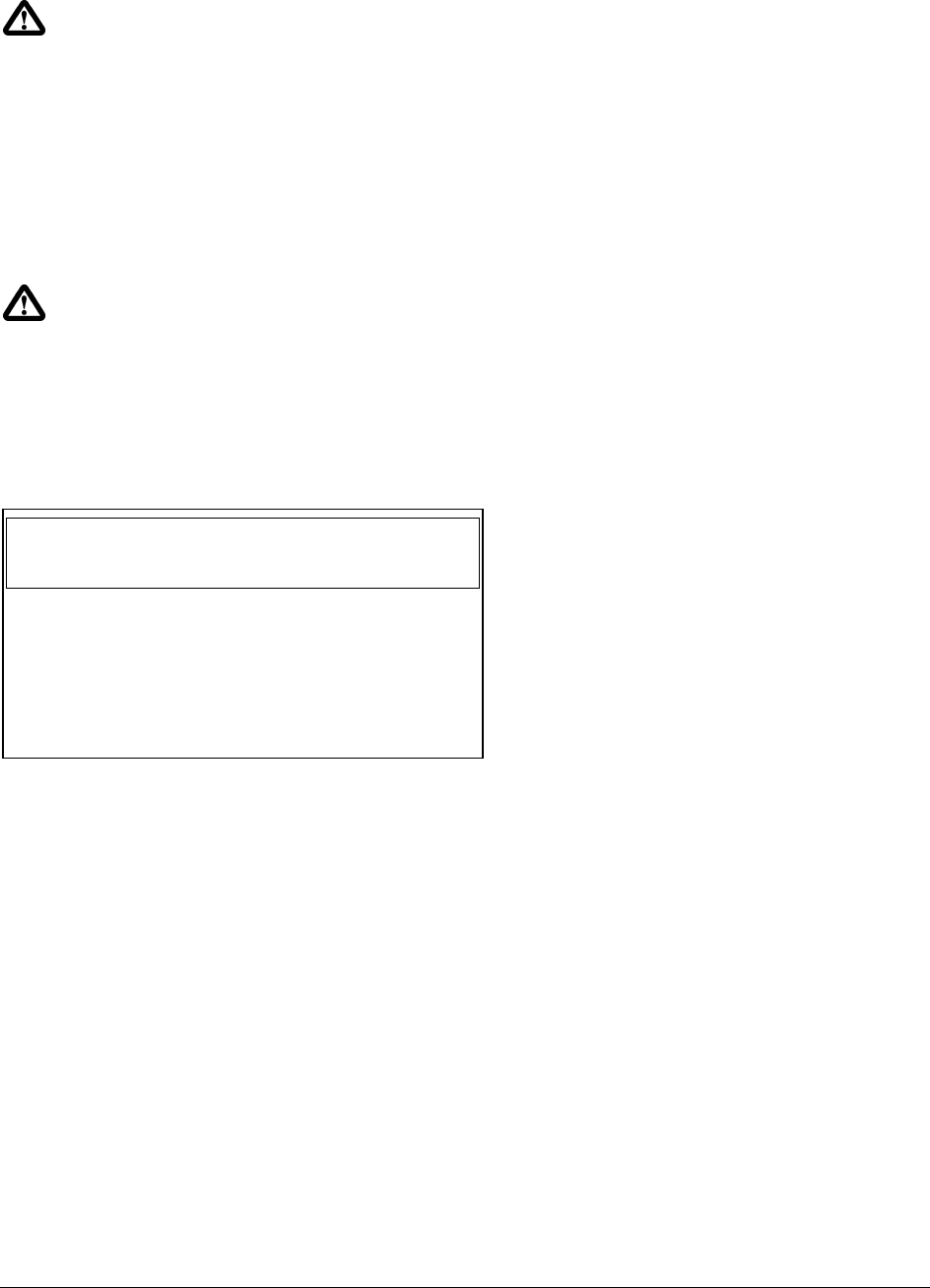
vi P400 Operating Manual
WARNING: ANTENNE:
FCC: Les changements ou modifications non expressément approuvés par Microhard Systems Inc. pourrait annuler
le droit de l'utilisateur à utiliser l'équipement. Ce dispositif a été testé avec UFL et SMA à polarité inverse connecteurs
avec les antennes énumérées à l'annexe A Lorsqu'il est intégré dans les produits OEM, antennes fixes nécessitent
une installation empêchant les utilisateurs finaux de les remplacer par des antennes non approuvées. Antennes ne
figurent pas dans les tableaux doivent être testés pour se conformer à la section FCC 15,203 (connecteurs d'antenne
unique,) et à la Section 15.247 (émissions).
IC: Cet émetteur radio 3143A-14P400 a été approuvé par Industrie Canada pour fonctionner avec les types
d'antennes inscrites à l'Annexe A avec le gain maximal autorisé et l'impédance d'antenne requise pour chaque
type d'antenne indiqué. Types d'antennes qui ne figurent pas dans cette liste, ayant un gain supérieur au gain
maximum indiqué pour ce type, sont strictement interdits pour une utilisation avec cet appareil.
WARNING: ÉQUIPEMENT DE MARQUAGE:
Les numéros FCC et IC dépendent du modèle de module radio. Ne pas utiliser le nom marketing du produit, mais
le modèle de distinguer les numéros Certifications. Cet appareil a été approuvé de façon modulaire. Le fabricant,
nom du produit, et les identificateurs de la FCC et d'Industrie Canada de ce produit doivent figurer sur l'étiquette à
l'extérieur de l'équipement de l'utilisateur final.
L'EXEMPLE D'ÉTIQUETTE:
Contains:
FCC ID: NS914P400 IC : 3143A-14P400
This device complies with Part 15 of the FCC Rules.
Operation is subject to the following two conditions:
(1) this device may not cause harmful interference,
and (2) this device must accept any interference
received including interference that may cause
undesired operation.

vii
Contents
Warranty ....................................................................................................................................................................... ii
Warranty Diclaims ........................................................................................................................................................ ii
Indemnification ............................................................................................................................................................. ii
Proprietary Rights ......................................................................................................................................................... ii
p400 Regulatory Requirements ................................................................................................................................... iii
CONTENTS ............................................................................................................................................................. VII
2. GENERAL ........................................................................................................................................................... 1
2.0 PRODUCT OVERVIEW ........................................................................................................................................................ 1
2.1 OUTPUT POWER LEVEL .............................................................................................................................. ....................... 2
3. INSTALLATION ................................................................................................................................................. 3
3.0 OVERVIEW ....................................................................................................................................................................... 3
3.1 ESTIMATING THE GAIN MARGIN ....................................................................................................................................... 3
3.2 ANTENNAS AND CABLING ................................................................................................................................................. 5
3.2.1 ........................................................................................................................ Internal Cabling
............................................................................................................................................................................... 5
3.2.2 ............................................................ Installing External Cables, Antennas and Lightning Arrestors
............................................................................................................................................................................... 6

1
2. General
2.0 Product Overview
The p400 is a high-performance embedded wireless data transceiver.
Operating in the 902 - 928 MHz ISM band, this frequency-hopping spread-
spectrum module is capable of providing reliable wireless data transfer
between almost any type of equipment which uses an asynchronous serial
interface. The small-size and superior RF performance of this module make
it ideal for many applications.
While a pair of p400 modules can link two terminal devices (“point-to-
point” operation); multiple modules can be used together to create a
network of various topologies, including “point-to-multipoint” and
“repeater” operation. Multiple independent networks can operate
concurrently, so it is possible for unrelated communications to take place in
the same or a nearby area without sacrificing privacy or reliability.
1.1 Features
Key features of the p400 include:
transmission within a public, license-exempt band of the radio
spectrum1 – this means that it can be used without access fees
(such as those incurred by cellular airtime).
a serial I/O data port with handshaking and hardware flow
control, allowing the p400 to interface directly to any
equipment with an asynchronous serial interface.
ease of installation and use – the p400 module uses a subset of
standard AT style commands, very similar to those used by
traditional telephone line modems.
all units in a system are physically identical, and can be
configured as a master, repeater or slave using the AT
command set. No hardware modifications are required
128 sets of user-selectable pseudo-random hopping patterns,
intelligently designed to offer the possibility of separately
operating multiple networks while providing security,
reliability and high tolerance to interference.
encryption key with 65536 user-selectable values to maximize
security and privacy of communications.
32-bit of CRC error detection and auto re-transmit to provide
accuracy and reliability of data.
1 902-928 MHz, which is license-free within North America; may need to be factory-
configured differently for some countries.
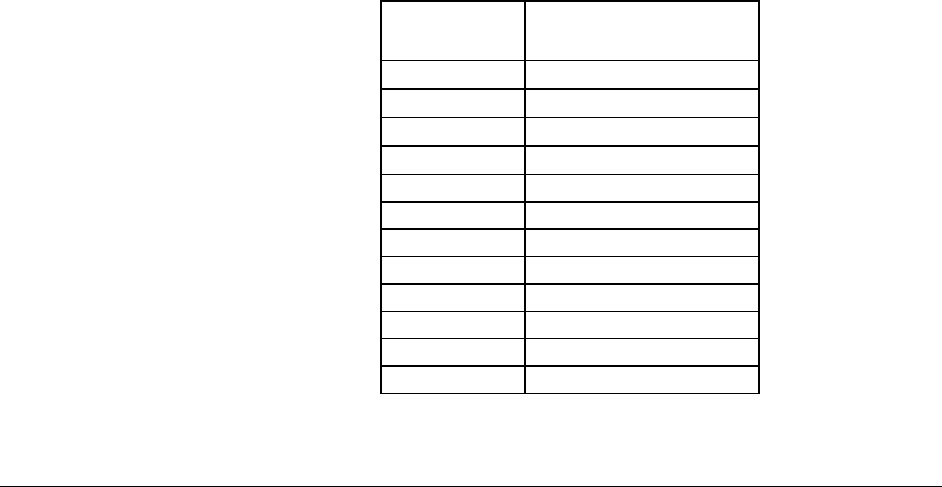
2
TDMA (time division multiple access) support, allowing
multi-slave access in point-to-point mode.
roaming ability, allowing repeaters and slaves to re-
synchronize with a new master if the synchronization pulse
from the original master is lost.
While the typical application for the p400 is to provide a short- to mid-
range wireless communications link between DTEs, it can be adapted to
almost any situation where an asynchronous serial interface is used and data
intercommunication is required.
2.1 Output Power Level
The Output Power Level determines at what power the p400 transmits. The
p400’s sensitive receiver can operate with very low power levels, so it is
recommended that the lowest power necessary is used; using excessive
power contributes to unnecessary “RF pollution”.
Ideally, you should test the communications performance between units
starting from a low power level and working upward until the RSSI is
sufficiently high and a reliable link is established. The conditions will vary
widely between applications, the output power settings can be calculated
based on following information.
Transmitter antenna gain
Cable loss
Equivalent Isotropically Radiated Power (EIRP) requirement by FCC
Regulations
Power Setting = 36 – Antenna Gain – Cable Loss
The power setting must be no more than the above calculation value. Any
higher is a violation of FCC rules. See IMPORTANT warning below.
Table 1 Output Power
Power Setting
(dBm) Approx. Output Power
(mW)
0 1
20 100
21 125
22 160
23 200
24 250
25 320
26 400
27 500
28 630
29 800
30 1000
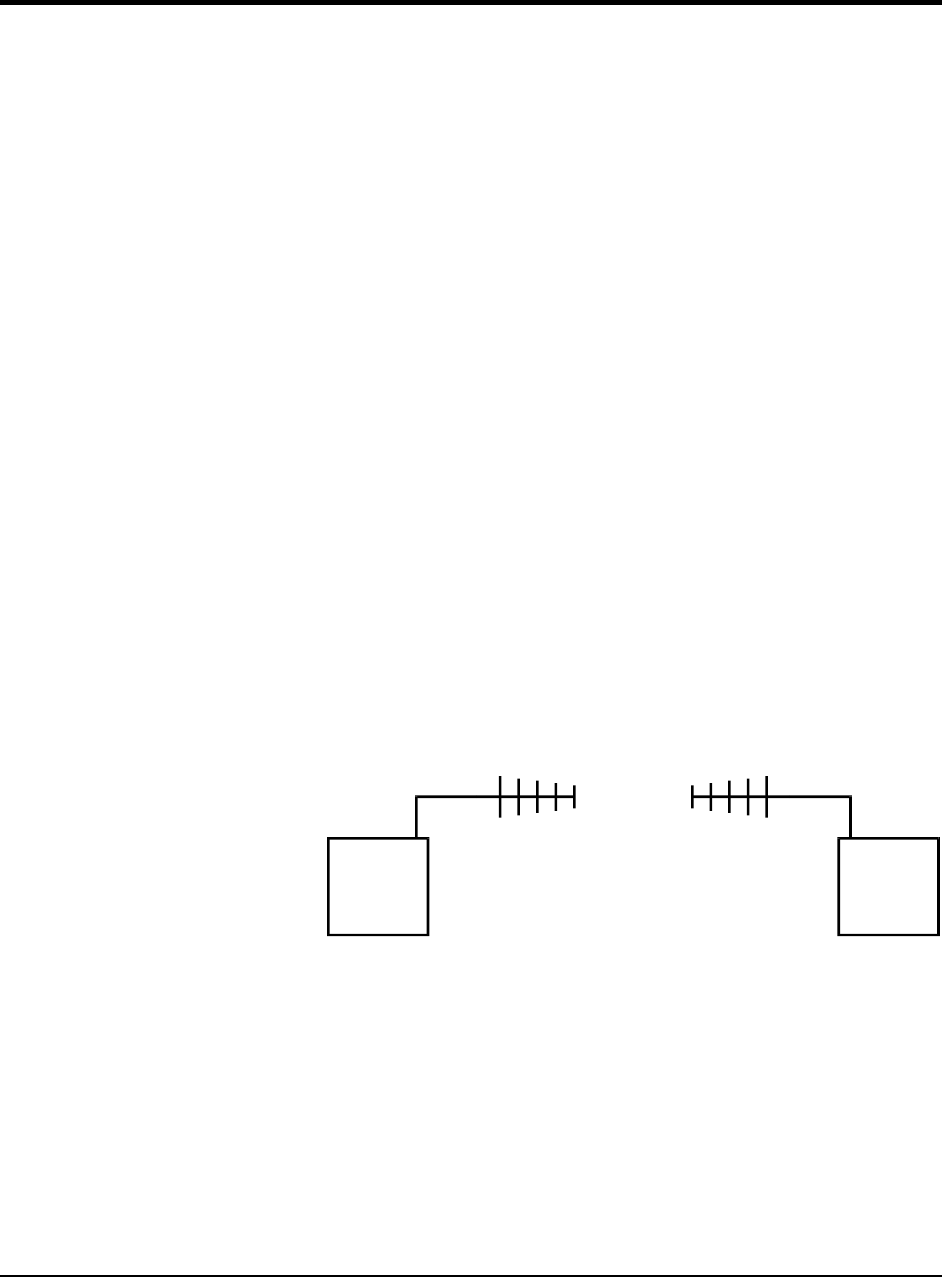
Chapter3 Installation 3
3. Installation
3.0 Overview
The p400 complies with FCC part 15 at the modular level for operation in
the license-free 902-928 MHz ISM band. This chapter provides guidelines
for installing and deploying equipment which incorporates the p400
module.
3.1 Estimating the Gain Margin
Successful communication between p400 modules is dependent on three
main factors:
System Gain
Path Loss
Interference
System gain is a calculation in dB describing the performance to be
expected between a transmitter-receiver pair. The number can be calculated
based on knowledge of the equipment being deployed. The following four
factors make up a system gain calculation:
1. Transmitter power (user selectable)
2. Transmitter gain (transmitting antenna gain minus cabling loss between
the transmitting antenna and the p400 module)
3. Receiver gain (Receiving antenna gain minus cabling loss between the
receiving antenna and the module)
4. Receiver sensitivity (Specified as -108dBm on the p400 module)
In the following illustration, the transmitting antenna has a gain of 6 dB,
and the receiving antenna has a gain of 3 dB. The cable loss between the
module and the antenna is 2 dB on both the transmitting and receiving side.
Transmitter
30 dBm
Output Power
Receiver
Sensitivity =
-105 dBm
Cable Loss = 2 dBCable Loss = 2 dB
Antenna Gain = 6 dB Antenna Gain = 3 dB
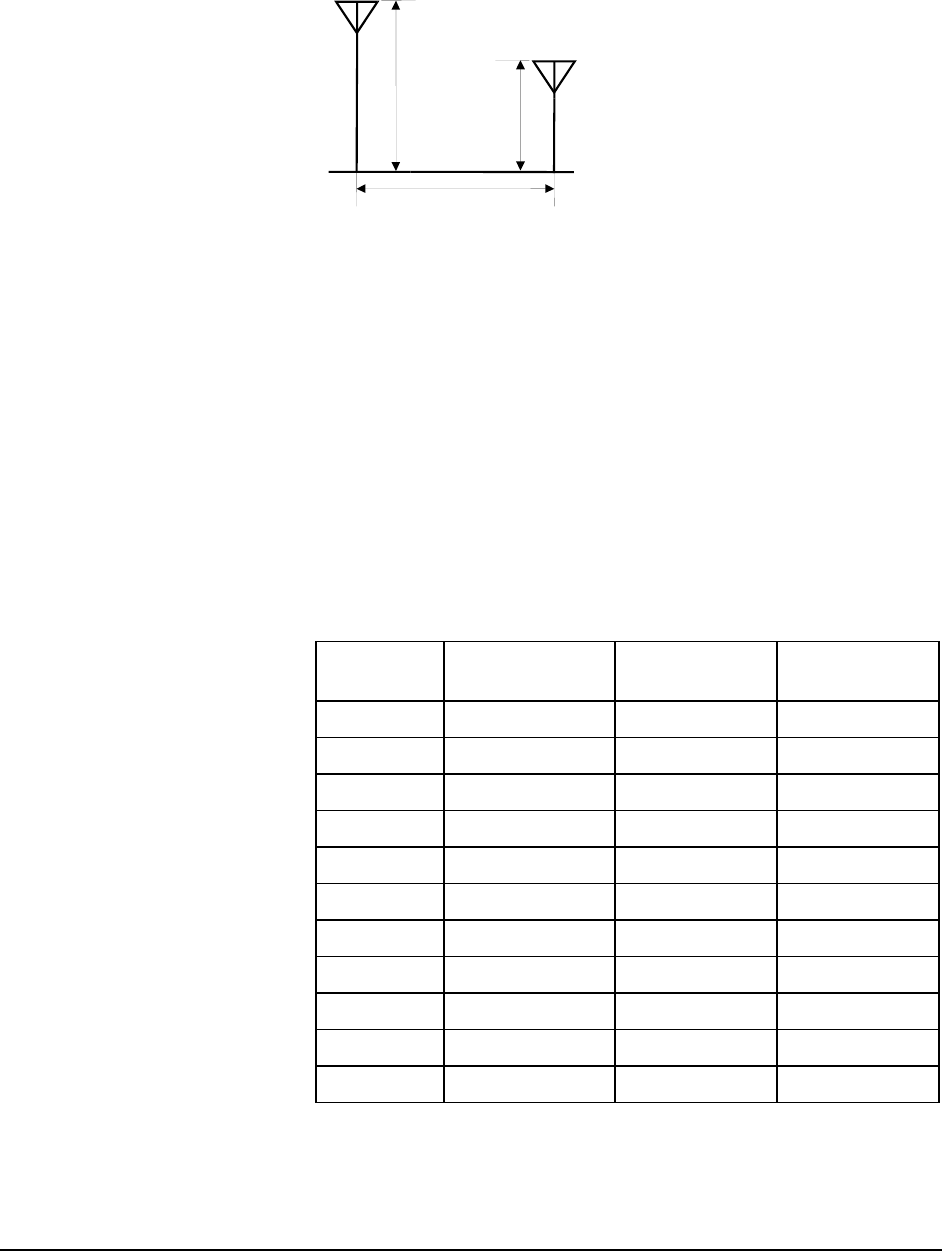
4 p400 Operating Manual
Figure 1 Gain Calculation
The power level has been set to 30dBm (1W) on the transmitter, and the
receiver sensitivity for the p400 is -108dBm.
System gain would be calculated to be:
30 - 2 + 6 + 3 - 2 + 108 = 143 dB.
Figure 2 System Deploying
When deploying your system, care must be taken to ensure the path loss
(reduction of signal strength from transmitter to receiver in dB) between
equipment does not exceed the system gain (140 dB in the above example).
It is recommended to design for a gain margin of at least 20 dB to ensure
reliable communication. Gain margin is the difference between system gain
and path loss. Referring to the same example, suppose the path loss is 100
dB, the gain margin would be 40 dB, which is more than adequate for
reliable communication.
Path loss is a very complicated calculation which mainly depends on the
terrain profile, and the height of the antennas off the ground.
The following table provides path loss numbers for varying antenna heights
and antenna separation: These numbers are real averages taken from rural
environments. They do not apply to urban, non-line-of-sight environments.
Table 2 Path Loss
Distance
(km) Base Height
(m) Mobile Height
(m) Path Loss
(dB)
5 15 2.5 116.5
5 30 2.5 110.9
8 15 2.5 124.1
8 15 5 117.7
8 15 10 105
16 15 2.5 135.3
16 15 5 128.9
16 15 10 116.2
16 30 10 109.6
16 30 5 122.4
16 30 2.5 128.8
Base Height (m)
Mobile
Heigh
t
(m)
Distance (km)
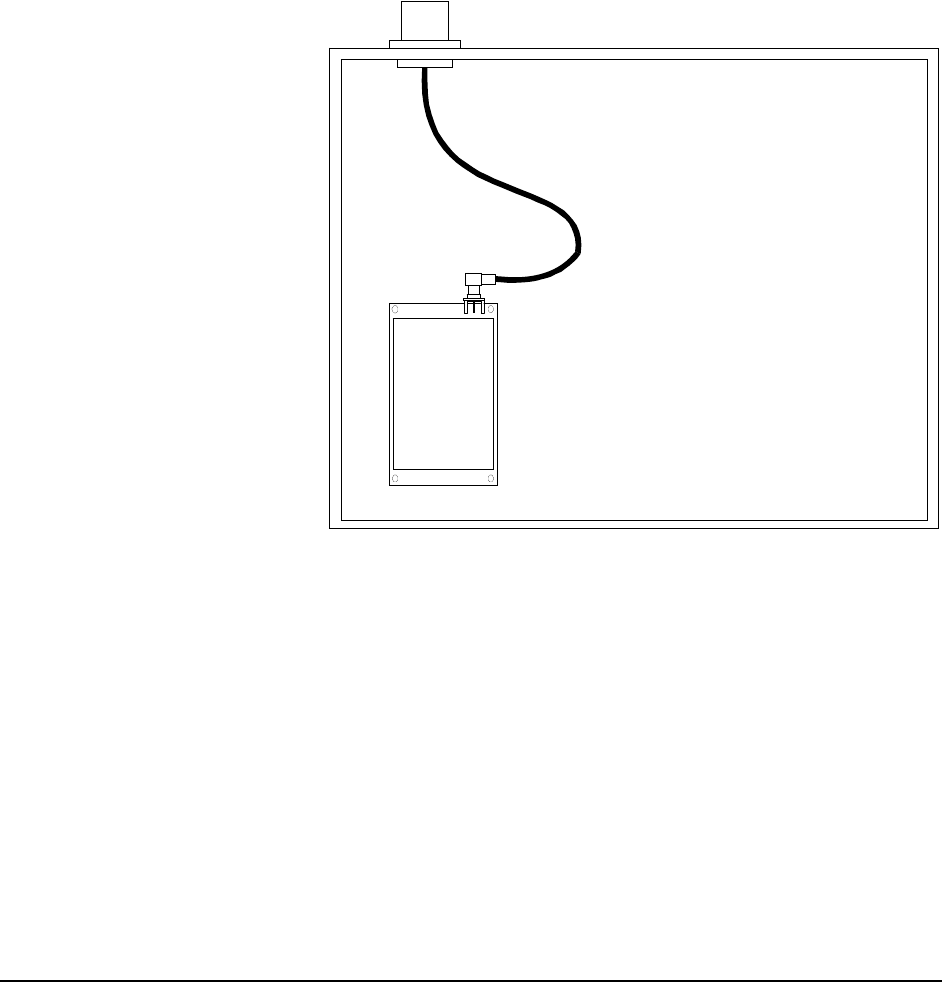
p400 Operating Manual 5
Once the equipment is deployed, you can verify the signal strength by
entering into Command Mode and reading Register S123. This register
provides the average signal strength in dBm. The minimum strength for
communication is roughly -108dBm. For consistent reliable
communication, you should try to deploy the equipment such that signal
strength exceeds -95dBm.
3.2 Antennas and Cabling
This section describes the recommended procedure for installing cabling
and antennas for use with the p400 module.
3.2.1 Internal Cabling
The most common method for installing the module is to run a cable from
the module’s MCX connector to a reverse TNC bulkhead connector on the
chassis of the equipment as shown in Figure 3. This cable can be purchased
from Microhard Systems.
Figure 3 Suggested Internal Cabling
Cable losses are negligible for the short piece used within the chassis.
Additional losses up to 0.5 dB may be present in the MCX and Reverse
TNC connections.
RG316 Cable
with MCX male
connecto
r
and Reverse TNC
b
ulkhea
d
connecto
r
Reverse TNC Connecto
r
MCX female connector
P400
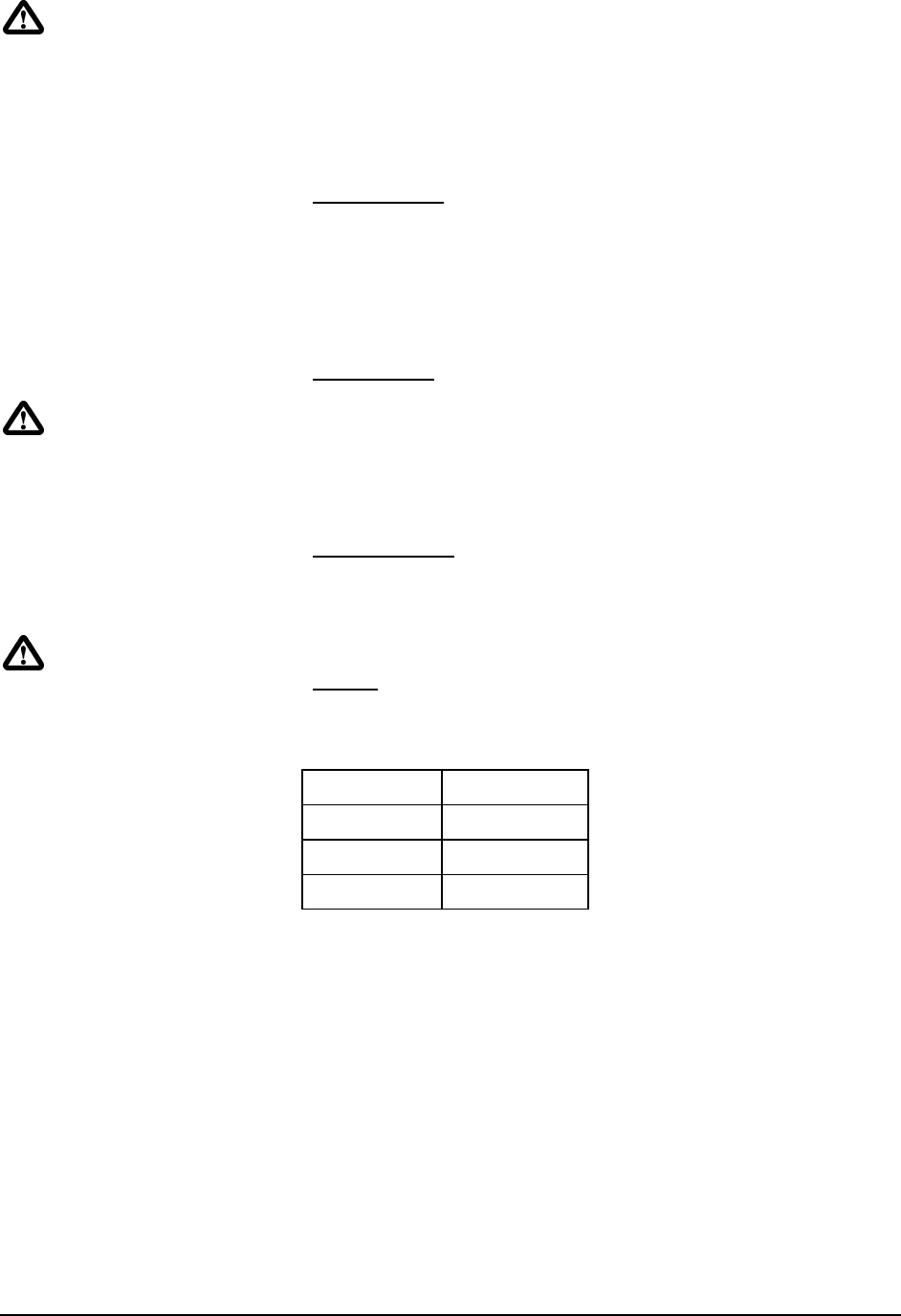
6 p400 Operating Manual
WARNING:
To satisfy FCC RF exposure
requirements for mobile
transmitting devices, a separation
distance of 23 cm or more should
be maintained between the
antenna of this device and
persons during device operation.
To ensure compliance, operations
at closer than this distance is not
recommended. The antenna used
for this transmitter must not be
co-located in conjunction with
any other antenna or transmitter.
WARNING:
Direct human contact with the
antenna is potentially unhealthy
when the p400 is generating RF
energy. Always ensure that the
p400 equipment is powered down
during installation.
WARNING:
Never work on an antenna
system when there is lightning in
the area.
3.2.2 Installing External Cables, Antennas and Lightning
Arrestors
Never work on an antenna system when there is lightning in the area.
Direct human contact with the antenna is potentially unhealthy when the
p400 is generating RF energy. Always ensure that the p400 equipment is
powered down during installation. At all times a distance of 23 cm must be
maintained between the antenna and any person when the device is in
operation.
Surge Arrestors
The most effective protection against lightning is to install two lightning
(surge) arrestors, one at the antenna, the other one at the interface with the
equipment. The surge arrestor grounding system should be fully
interconnected with the transmission tower and power grounding systems to
form a single, fully integrated ground circuit. Typically, both ports on surge
arrestors are N-female.
External Filter
Although the p400 is capable of filtering out RF noise in most
environments, there are circumstances that require external filtering.
Paging towers and cellular base stations in close proximity to the p400
antenna can desensitize the receiver. Microhard Systems’ external cavity
filter eliminates this problem. The filter has two N-female ports and should
be connected in line at the interface to the RF equipment.
Weatherproofing
Type N and RTNC connectors are not weatherproof. All connectors should
be taped with rubber splicing tape (weatherproofing tape), and then coated
with a sealant.
Cabling
The following coax cables are recommended:
Table 3 Cable Loss
Cable Loss (dB/100ft)
LMR 195 10.7
LMR 400 3.9
LMR 600 2.5
Factors to take into consideration when choosing a cable are:
price;
bend radius limitations (the lower performance cables generally can
bend more sharply)
performance requirements; and,
distance between the equipment and the antenna.
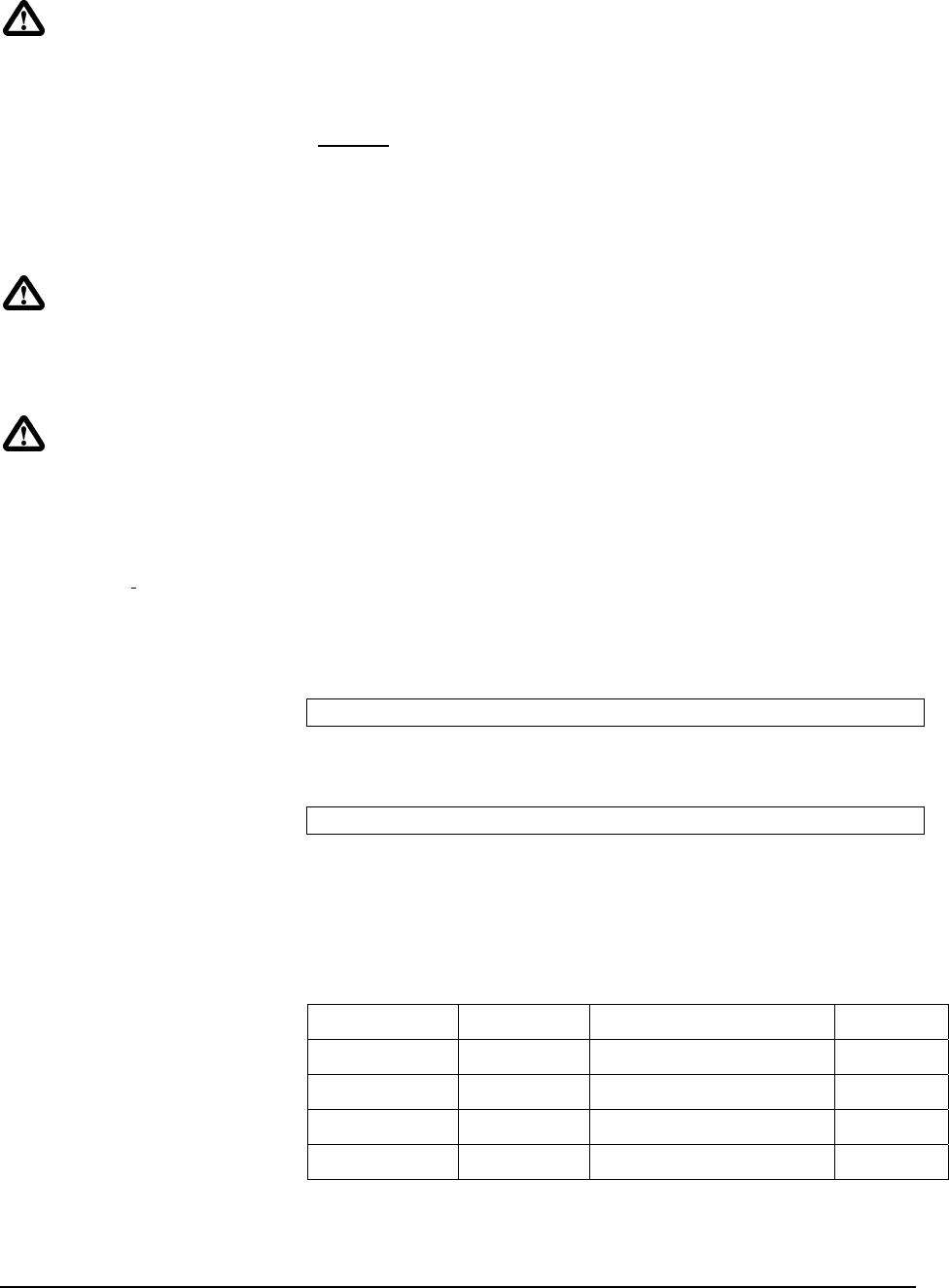
p400 Operating Manual 7
WARNING:
MAXIMUM EIRP
FCC and IC Regulations allow
up to 36dBm effective
isotropically radiated power
(EIRP). Therefore, the sum of
the transmitted power (in dBm),
the cabling loss and the antenna
gain cannot exceed
36 dBm with respect to the
isotropic radiator.
WARNING:
The p400 can only be used with
any antennas listed in Appendix
A.
WARNING:
Be careful with dBi vs dBd gains
on antenna specifications.
Antenna manufactures may not
clearly indicate the gain on the
antenna if it is dBd or dBi. Note
1dBd = 2.15dBi.
When installing the cable, always begin fastening at the top near the
antenna connector/surge arrestor. The cable must be supported at the top
with a hose clamp or wrap lock, and at 5 ft intervals down the length of the
tower. Over-tightening the fasteners will dent the cable and reduce
performance. If properly grounded surge arrestors are not installed at both
the top and the bottom of the cable, then the cable should be grounded to
the tower at these locations using a cable grounding kit. If the tower is non-
conductive, then a separate conductor, physically separate from the cable,
should be run down the tower.
Antenna
Before choosing an antenna, you should have some knowledge of the path
loss and the topology of the equipment. If the equipment is in a fixed
location and is to communicate with only one other unit also in a fixed
location, then a Yagi antenna is suitable. Choose a Yagi with enough gain
to ensure adequate gain margin. When deploying the Yagi, point the
antenna towards the intended target, ensuring the antenna elements are
perpendicular to the ground for vertical polarization.
In applications where there are multiple units that you must communicate
with or units, which are in motion, you may select an Omni-directional
antenna with appropriate gain.
See appendix A for a list of approved antennas that can be used with
the p400 radio modem. If you require another type of antenna please
contact Microhard Systems Inc. The p400 CANNOT be used with any
antenna that does not appear in Appendix A.
Microhard Systems Inc. can provide you with approved antennas to ensure
FCC and Industry Canada compliance.
FCC Regulations allow up to 36dBm effective isotropically radiated
power (EIRP). Therefore, the sum of the transmitted power (in dBm),
the cabling loss and the antenna gain cannot exceed 36dBm with
respect to the isotropic radiator.
EIRP is calculated as follows:
EIRP = Tx Power(dBm) - Cable/Connector Loss(dB) + Ant Gain(dBi)
Antenna Gains must be in dBi when calculating the 36dBm EIRP limit.
1dBd = 2.15dBi
Use the guidelines in the previous section for calculating cable and
connector losses. If cabling and connector losses are 2 dB, then the
maximum allowable gain of the antenna will be 8 dB.
Examples of Antenna and Power settings to maintain 36dBm EIRP
Antenna Power Level Minimum Cable / Loss EIPR
8.15 dBi Omni 30dBm 25 feet LMR195 / 2.675dB 35.475dBm
12.5 dBi Patch 23dBm 10 feet LMR195 / 1.07dB 34.43dBm
14.15 dBi Yagi 21dBm 10 feet LMR400 / 0.39dB 34.76dBm

8 p400 Operating Manual
Examples:
FCC and Industry Canada Regulations allow up to 36dBm effective
isotropically radiated power (EIRP). Therefore, the sum of the
transmitted power (in dBm), the cabling loss and the antenna gain
cannot exceed 36dBm with respect to the isotropic radiator.
Example 1)
What is the maximum power the p400 can be set to comply with FCC
and IC given the following equipment given a Rubber Ducky Ant Gain
2dBi and no cable or connectors in the system?
Max EIRP 36dBm
Max TX power = EIRP – Ant Gain(dBi) + Cable/Connector loss (dB)
Ant Gain dBi = 2dBi
Max TX power = 36dBm – 2dBi + 0dB = 34dBm
We can set the modem to the maximum power setting of 30dBm.
Example 2)
What is the maximum power the p400 can be set to comply with FCC
and IC given the following equipment given a Yagi Ant Gain 12dBd
and cable and connector loss of 4.5 dB?
Max EIRP 36dBm
Max TX power = EIRP – Ant Gain(dBi) + Cable/Connector loss (dB)
Ant Gain dBi = Ant Gain dBd + 2.15 dB
Yagi Gain (dBi) = 12 + 2.15 = 14.15dBi
Max TX power = 36dBm – 14.15dB + 4.5dB = 26.35dBm
We must round down
Hence Max TX power = 26dBm
Example 3)
What is the maximum power the p400 can be set to comply with FCC
and IC given the following equipment given a Omni Ant Gain 6dBd
and cable and connector loss of 2.5 dB?
Max EIRP 36dBm
Max TX power = EIRP – Ant Gain(dBi) + Cable/Connector loss (dB)
Ant Gain dBi = Ant Gain dBd + 2.15 dB
Omni Gain (dBi) = 6 + 2.15 = 8.15dBi
Max TX power = 36dBm – 8.15dB + 2.5dB = 30.35dBm
Hence Max TX power = 30dBm

p400 Operating Manual 9
A. Approved Antennas 900MHz Operation
Group Part Number Description
Rubber Ducky
MHS031000 3dBi, 900MHz Rubber Ducky Antenna RPTNC Swivel
MHS031070 3dBi, 900MHz Rubber Ducky Antenna Reverse SMA Swivel
MHS031080 3dBi, 900MHz Rubber Ducky Antenna Reverse SMA Straight
Transit Antennas
MHS031210 3dBi, 900 MHz Transit Antenna with Ground Plane
MHS031220 3dBi, 900MHz Transit Antenna No Ground Plane
MHS031230 3dBi, 900MHz Transit Antenna Permanent Mount GP
MHS031240 3dBi, 900MHz Transit Antenna Permanent Mount NGP
Mounts for Transit Antennas have a RPTNC Pigtail
Yagi Antennas
MHS031311 6dBd, 900MHz Yagi Directional Antenna Antenex, RPTNC Pigtail
MHS031431 6.5dBd, 900MHz Yagi Directional Antenna Bluewave, RPTNC Pigtail
MHS031501 9dBd, 900MHz Yagi Directional Antenna Antenex, RPTNC Pigtail
MHS031441 10dBd, 900 MHz Yagi Directional Antenna Bluewave, RPTNC Pigtail
MHS031451 11dBd, 900 MHz Yagi Directional Antenna Bluewave, RPTNC Pigtail
Patch Antennas
MHS031440 8dBi 900 MHz Patch Antenna, RPTNC Pigtail
Omni Directional
MHS031251 3dBd, 900MHz Omni Directional Antenna Antenex, RPTNC Pigtail
MHS031461 3dBd, 900 MHz Omni Directional Antenna Bluewave, RPTNC Pigtail
MHS031321 6dBd, 900MHz Omni Directional Antenna Antenex, RPTNC Pigtail
MHS031471 6dBd, 900 MHz Omni Directional Antenna Bluewave, RPTNC Pigtail
WARNING:
Changes or modifications not expressly approved by Microhard Systems Inc. could void the user’s authority to operate
the equipment. This device has been tested with MMCX connectors with the antennas listed in Appendix A When
integrated in OEM products, fixed antennas require installation preventing end-users from replacing them with non-
approved antennas. Antennas not listed in the tables must be tested to comply with FCC Section 15.203 (unique
antenna connectors) and Section 15.247 (emissions). Please Contact Microhard Systems Inc. if you need more
information.
Industry Canada: This device has been designed to operate with the antennas listed below, and having a maximum gain
of 13.2 dBi. Antennas not included in this list or having a gain greater than 13.2 dBi are strictly prohibited for use with
this device. The required antenna impedance is 50 ohms. To reduce potential radio interference to other users, the
antenna type and its gain should be so chosen that the equivalent isotropically radiated power (EIRP) is not more than
that required for successful communication. This Class B digital apparatus complies with Canadian ICES-003.
Under Industry Canada regulations, this radio transmitter may only operate using an antenna of a type and maximum
(or lesser) gain approved for the transmitter by Industry Canada. To reduce potential radio interference to other users,
the antenna type and its gain should be so chosen that the equivalent isotropically radiated power (e.i.r.p.) is not more
than that necessary for successful communication.
This radio transmitter (identify the device by certification number, or model number if Category II) has been approved
by Industry Canada to operate with the antenna types listed above with the maximum permissible gain and required
antenna impedance for each antenna type indicated. Antenna types not included in this list, having a gain greater than
the maximum gain indicated for that type, are strictly prohibited for use with this device.
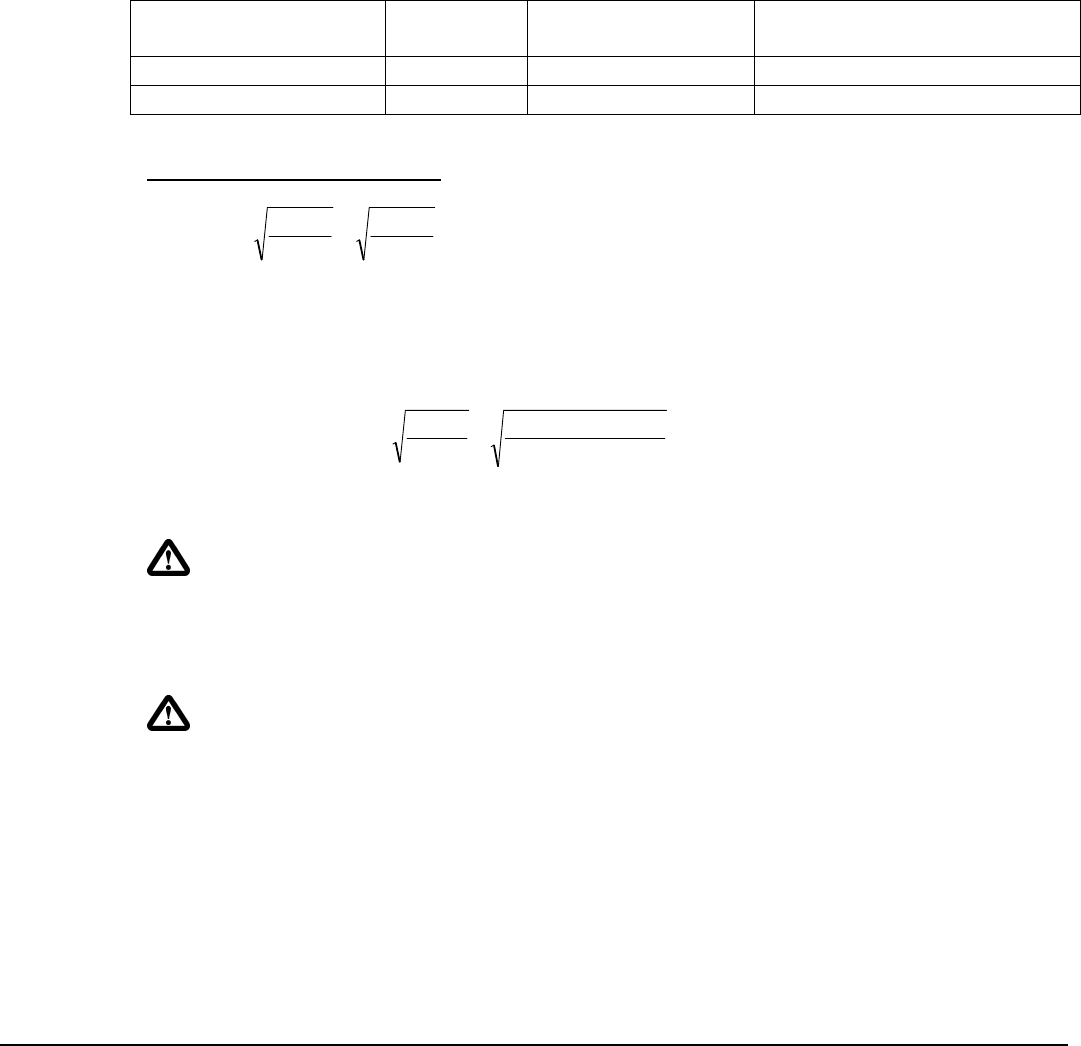
10 Operating Manual
B. Antenna / Separations
This relates to operation in 400MHz Licensed Band
Antenna Impedance
(ohms) Antenna Gain (dBi) Minimum Separation
Distance (cm)
Minimum Gain 50 0 24
Maximum Gain 50 10 77
RF EXPOSURE DISTANCE LIMITS
S
EIRP
S
GP
r
44
Sample calculation:
S = 406.1/1500 mW/cm2
EIRP = 51 dBm = 1055/10 mW = 125893 mW (Worst Case)
(Minimum Safe Distance, r) = cm
S
EIRP 7.76
)1500/1.406(4
2000
4
WARNING:
Changes or modifications not expressly approved by Microhard Systems Inc. could void the user’s
authority to operate the equipment. Please Contact Microhard Systems Inc. if you need more information.
WARNING:
To satisfy FCC RF exposure requirements for mobile transmitting devices, a separation distance is based
on the above them ranging from 24 cm to 77 cm between the antenna of this device and persons during
device operation. To ensure compliance, operations at closer than this distance is not recommended. The
antenna used for this transmitter must not be co-located in conjunction with any other antenna or
transmitter.